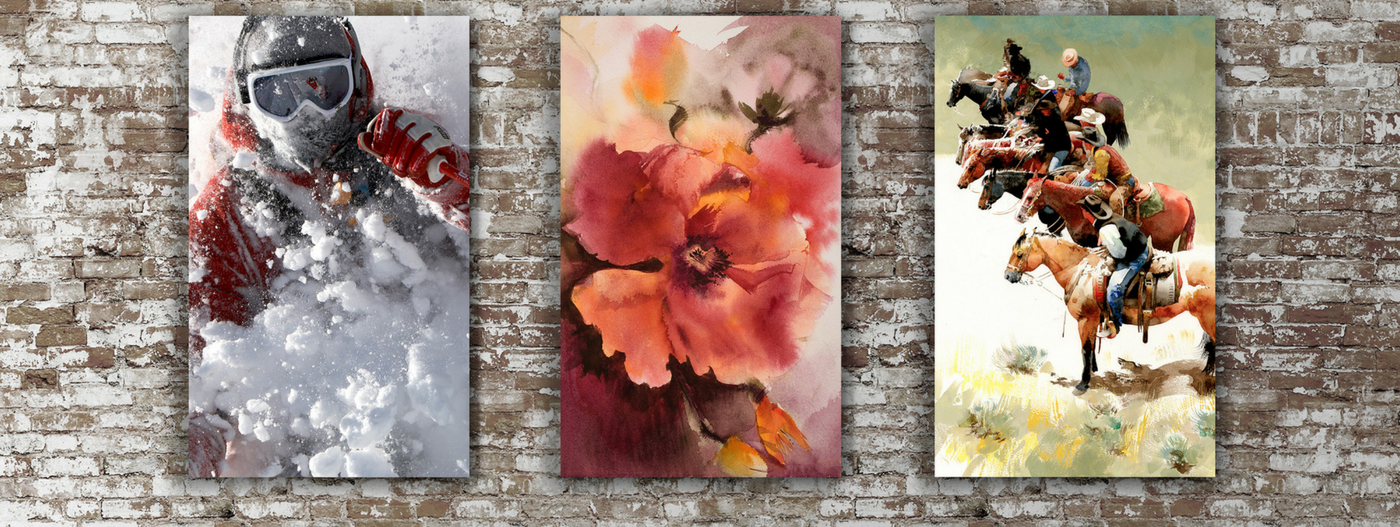
In this guide, we’ll share best practices for printing watercolor art, from scanning and color management to choosing papers and finding trusted fine art printing services in Salt Lake City or beyond. Whether you’re a seasoned artist or new to fine art reproduction, these tips will help you create professional-quality prints that honor your original work.
1. Start With a High-Quality Scan or Photograph
The foundation of a great print is a great digital file. Since watercolor is often subtle and nuanced, capturing all the detail, light, and texture is crucial. Use a high-resolution scanner capable of capturing, ideally, 300 DPI or higher, or work with a professional art reproduction studio that specializes in digitizing fine art.
If you’re photographing the piece yourself, do so in natural light or with balanced studio lighting to avoid color shifts and shadows. Use a DSLR camera and tripod for sharpness, and make sure the artwork is flat and evenly lit. Any distortion or blur will be amplified in the final print.
2. Use Color Calibration for Accuracy
Color accuracy is a major concern when printing watercolor art. Since the original pieces often contain soft hues and delicate transitions, even small shifts can impact the final print. Be sure your monitor is properly calibrated, and consider working in Adobe RGB color space for a wider gamut. There are many video tutorials on how to calibrate your specific monitor online.
When working with a printing service, request a test proof to check color fidelity before running a full edition. A reputable fine art printing studio will work with you to match the print as closely as possible to your original.
3. Choose Archival Pigment Inks
Not all inks are created equal. For fine art printing, especially with watercolor reproductions, pigment-based inks are essential. These inks offer superior color stability and longevity, making them ideal for collectors and art buyers.
Giclée printing is widely regarded as the standard for high-quality watercolor reproduction. It uses archival pigment inks on acid-free substrates, offering prints that can last over 100 years without fading when properly cared for. If you’re looking for giclée printing services in Salt Lake City, be sure to ask if the printer uses true archival pigments and materials.
4. Pick the Right Paper for Watercolor Prints
The choice of paper plays a big role in how your print looks and feels. For watercolor art, textured fine art papers like Epson’s Cold Press Natural, Cold Press Bright, Somerset Velvet, or Hahnemuhle’s Photo Rag Satin are popular choices. These papers replicate the feel of watercolor paper and provide excellent ink absorption and detail.
Here are a few paper characteristics to consider:
- Weight: Heavier papers (usually 250 gsm and up) provide durability and a premium feel.
- Texture: Some artists prefer smooth (hot press-style) papers, while others opt for more texture (cold press-style).
- Finish: Matte papers often work best with watercolor, as they don’t produce glare and preserve the natural look.
Ask your printer if they offer paper samples or test prints to help you decide which surface suits your artwork best. (See our blog on choosing the right paper for your prints for more information).
5. Consider Sizing and Cropping Carefully
Watercolor pieces often rely on white space and organic edges, so consider how your print will be trimmed and presented. Maintain the original aspect ratio when resizing, and be cautious with borderless cropping, as it can alter the composition.
You may want to add a white border to help with matting or framing, especially if you’re selling prints online. A professional printing service can help you prepare the file correctly for your chosen size and layout.
6. Sign and Number Limited Editions
If you’re creating a limited edition run of your watercolor prints, be sure to sign and number each print in pencil. This not only increases the value of each piece but also assures collectors that they’re purchasing a genuine part of your artistic output.
Include a certificate of authenticity when appropriate. Many fine art reproduction studios can help you manage limited edition printing workflows, including consistent color matching and inventory tracking.
7. Partner With a Trusted Printing Studio
Not all print shops are equipped for the needs of fine art reproduction. Look for a studio that specializes in giclée printing, offers custom proofing, and has experience working with watercolor artists.
If you’re in the Salt Lake City area, MasterLab is one of the leading providers of fine art printing services. With nearly 30 years of experience, our team offers museum-grade giclée prints on premium papers, professional scanning and color matching, and fast turnaround times for local and national artists.
8. Store and Handle Prints With Care
Even the best watercolor prints can be damaged by improper storage or handling. Keep prints flat and protected in archival sleeves or folders. Avoid exposure to direct sunlight, humidity, or acidic materials.
When selling prints, always ship them in sturdy, acid-free packaging with protective glassine or tissue to avoid scratches and moisture. Consider offering framed prints to add value and ensure safe display.
Final Thoughts
Creating high-quality prints of your watercolor artwork allows you to share your work more widely, generate income, and build your reputation as a professional artist. By following these best practices—from accurate scanning and color calibration to choosing the right paper and printer—you’ll ensure your fine art reproductions do justice to your originals.
For artists seeking printing services in Salt Lake City, MasterLab is here to help. Whether you’re reproducing a single piece or building a full portfolio, our team is committed to helping watercolor artists create beautiful, lasting prints that connect with collectors and fans alike.
Ready to get started? Contact us today to learn more about our custom fine art printing services and how we can help bring your watercolor vision to life.





